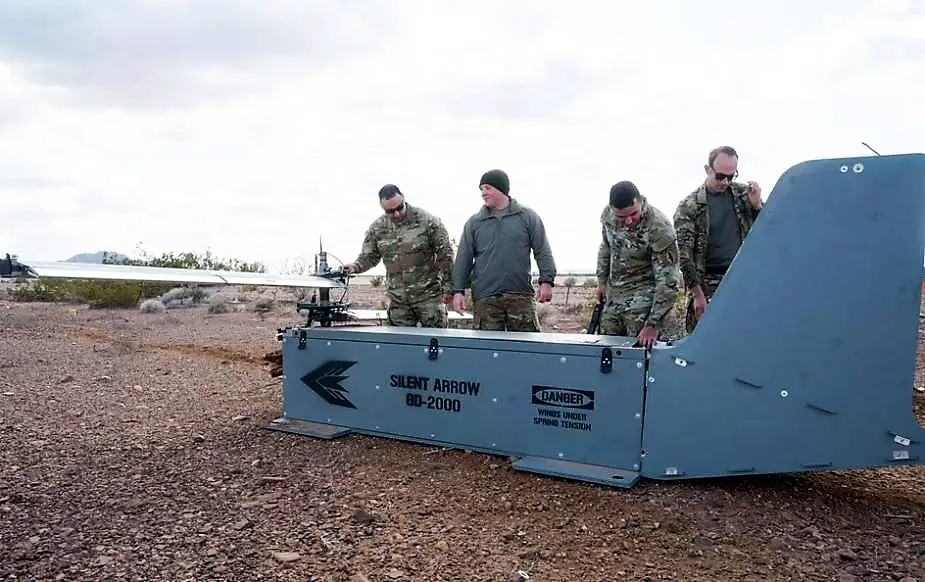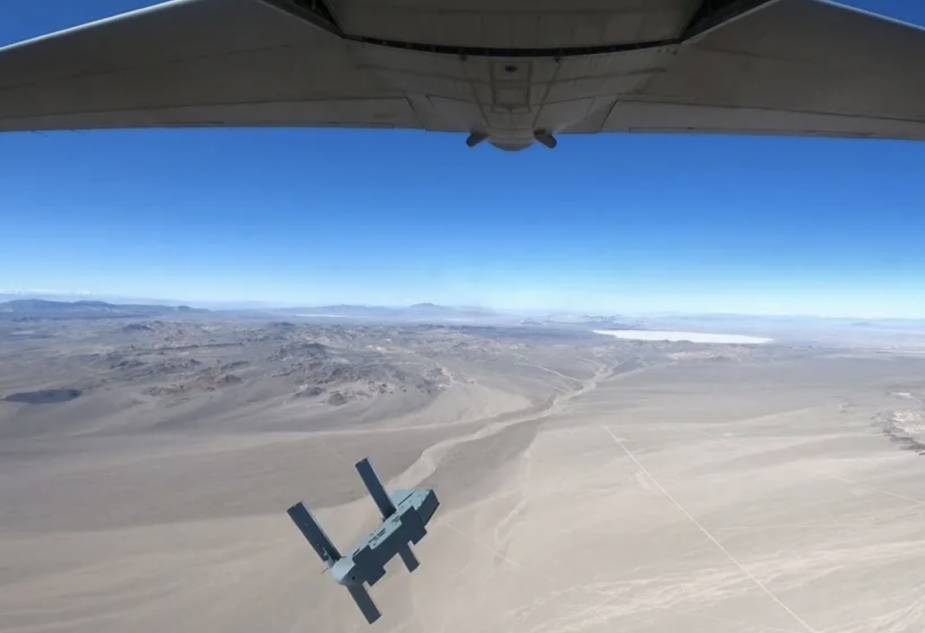Breaking news
US 1st Special Forces Group (Airborne) tests GD-200 new prototype glider for speedy resupply.
In February 2023, the 1st Special Forces Group (Airborne) successfully tested a new unmanned aerial delivery platform: the GD-2000 glider (GD-200 stands for ‘glider disposable 2,000 lbs.’). This glider is an alternative to the current means of supply delivery into diverse environments. Implementation of the glider will result in enhanced capabilities of the Special Forces detachments deployed through varied, and often restrictive, terrain.
Follow Army Recognition on Google News at this link

Yuma Proving Ground, Ariz. – Soldiers from 1st Special Forces Group (Airborne) recover the GD-2000 glider after its landing at Yuma Proving Grounds, Ariz. On February 13, 2023 (Picture source: U.S. Army)
The testing was funded through a $2.2 million award to Silent Arrow through the Pentagon’s Warfighter Lab Incentive Fund (WLIF) as the result of a partnership between the Pentagon-based J7 Joint Force Development Directorate, U.S. Indo-Pacific Command (INDOPACOM), and U.S. Special Operations Command (SOCOM) to develop “a series of advanced operational demonstrations and Concept of Operations (CONOPs) development activities,” as the company announced in February of last year, Jared Keller reports in Tanks & Purpose.
This success does not only lie with the operators on the ground but also with utilizing emerging technology. The GD-2000 is a glider platform — which, as a tandem-wing glider, flies on four seven-foot spring-launched wings that pop out of the fuselage — that Special Operation Forces innovators hope will revolutionize aerial delivery to Green Berets in the field. “It’s an autonomous aircraft that carries 1,500 pounds of payload,” said Chip Yates, CEO of Yates Electrospace, and the creator of the glider. “It flies for 15 minutes, flares and lands where you want it,” he continued.

Silent Arrow GD-2000 glider drone released (Picture source: Silent Arrow)
Traditional supply delivery systems can be more cumbersome and more detectable by the enemy when compared with the glider. It was birthed out of a request from the U.S. Marine Corps as an alternative to the Joint Precision Air Drop System (JPADS). JPADS tend to be both larger in size and have limited ability to maneuver through the air, making them less accurate, especially over long distances or in high-wind conditions. “What this glider does is give us a much greater [travel distance] and a much greater glide ratio into a target,” said a Special Forces detachment commander, whose team tested the glider. Billed as “the world’s most dependable standoff resupply platform” by Silent Arrow, the company indeed claims the GD-2000 can handily beat the delivery range of the U.S. military’s parachute-based Joint Precision Airdrop System (JPADS) at half the cost of the latter, operating “through contested spaces with GPS accuracy”, Jared Keller reports in Tanks & Purpose.

Silent Arrow GD-2000 glider drone (Picture source: Silent Arrow)
The GD-2000 is a small aircraft designed to land at a precise location while being released from a greater distance than traditional supply drops. The glider can travel up to 40 miles once released and is completely disposable once on the ground, allowing it to be left in denied or contested territory without compromising the security of the Soldiers receiving the supplies or the technologies or techniques employed by the U.S. military.
“If we are able to get [the glider] up to 40,000 feet we’re looking at [travel distances] in excess of 25 to 30 miles. That’s a pretty unique capability and not matched by anything we currently have,” the commander said. This would also allow for aerial delivery to remote islands that require a greater level of precision to reliably reach their destination. The involvement of INDOPACOM in the WILF contract reveals the Pentagon’s intentions regarding Silent Arrow’s disposable resupply drones. With some modifications, the designer of the glider claims it can also land and be recovered in a maritime environment, further enhancing resupply capabilities to the sort of small islands often found in the Indo-Pacific, where the Pentagon is increasingly focused on preparing for a future conflict with China.
During the testing, the GD-2000 carried a 1,000-pound payload and was airdropped from a C-27J Spartan plane. During several drops, the glider landed within 30 meters of its intended target at Yuma Proving Grounds, Arizona. The hull of the aircraft was still intact and protected the cargo inside.

A Silent Arrow GD-2000 glider is released from a C-27J airplane at Yuma Proving Grounds on February 13, 2023 (Picture source: U.S. Army)
Defense News April 2023

























